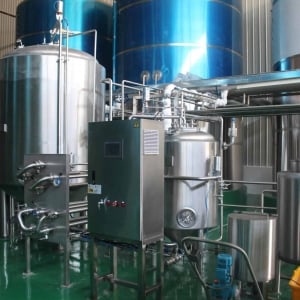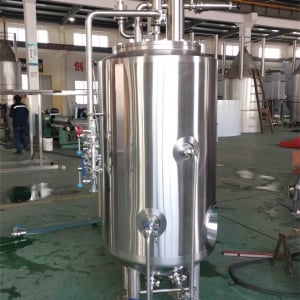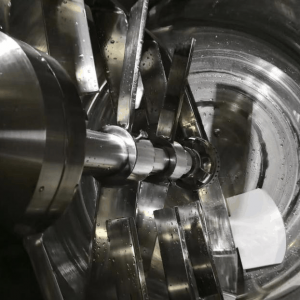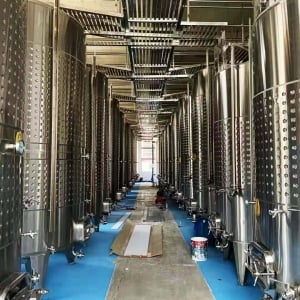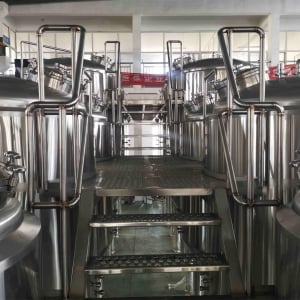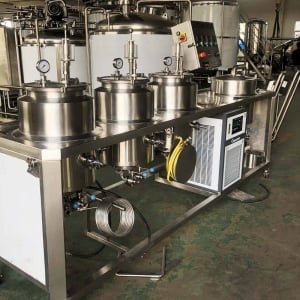Kombucha Brewing Equipment
Kombucha has become a popular beverage for health-conscious individuals seeking an alternative to sodas and sugary drinks. Brewing your kombucha at home or commercially requires the right equipment to ensure quality and consistency in the final product. If you’re serious about brewing kombucha, having the proper tools is essential to producing a delicious and safe product.
In this guide, we’ll break down everything you need to know about kombucha brewing equipment, from the key components to choosing the right supplier. Whether you’re starting a small home brewing operation or scaling up for commercial production, this article will help you make informed decisions.
Overview of Kombucha Brewing Equipment
Kombucha brewing requires a precise combination of equipment to manage the fermentation process effectively. This guide outlines the equipment needed, offers a comparison of various products and suppliers, and walks you through the brewing process.
Kombucha is brewed through a fermentation process involving tea, sugar, and a symbiotic culture of bacteria and yeast (SCOBY). The fermentation process can be relatively simple at home but becomes more complex when scaled for commercial use, where larger batches and consistent results are essential.
Key Equipment for Brewing Kombucha
Kombucha brewing involves a few specific tools to ensure a safe and successful brew. The equipment varies depending on the batch size, whether you’re a hobbyist or brewing commercially.
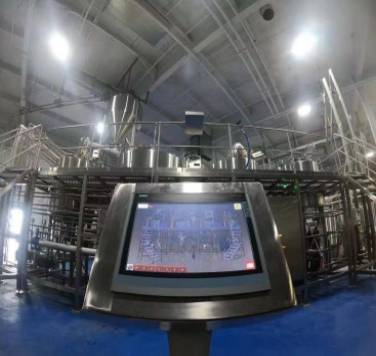
Guide to Kombucha Brewing Equipment
1. Essential Kombucha Brewing Equipment
Regardless of the scale of your operation, there are a few items that every kombucha brewer will need. These items form the backbone of the brewing process.
- Brewing Vessel: The vessel is where fermentation occurs. This can range from small glass jars to large stainless steel fermenters, depending on your production volume.
- SCOBY (Symbiotic Culture of Bacteria and Yeast): The SCOBY is the essential ingredient that ferments the tea and sugar into kombucha.
- Tea and Sugar: Kombucha needs a tea base (black, green, or a combination) and sugar to feed the SCOBY during fermentation.
- Cloth Cover and Rubber Band: A breathable cloth cover allows air to flow while protecting your brew from contaminants.
- Temperature Control Tools: Maintaining a consistent temperature (ideal range 75-85°F) is key for successful fermentation.
- Bottling Equipment: Once fermented, bottling is needed to store your kombucha safely. Bottles with tight-sealing caps are best to keep carbonation.
2. Equipment for Scaling Up to Commercial Kombucha Brewing
For larger operations, equipment needs will change to handle bigger batches and ensure product consistency. Commercial setups usually require more advanced gear such as:
- Large-Scale Fermenters: Typically made of stainless steel or glass, these can hold anywhere from 5 gallons to 500 gallons, depending on the scale of production.
- Temperature Control Systems: High-end systems with heating pads, cooling systems, or jackets ensure the kombucha stays in the optimal fermentation range.
- Industrial Bottling Systems: For commercial brewers, manual bottling won’t cut it. Automated bottling lines ensure that each bottle is consistently filled, sealed, and labeled.
- Pasteurization or Filtration Equipment: Although kombucha is often brewed raw, some commercial brewers use pasteurization or filtration to extend shelf life.
Detailed Kombucha Brewing Equipment Breakdown
Types of Kombucha Brewing Equipment and Uses
| Equipment Type | Description | Best For |
|---|---|---|
| Glass Brewing Jar | Glass is non-reactive and allows for easy monitoring of the fermentation process. | Home brewers |
| Stainless Steel Fermenter | Stainless steel is durable, non-reactive, and ideal for larger commercial batches. | Commercial production |
| Heating Mat | Ensures consistent temperature for home or small-batch brewing. | Home and small-scale brewers |
| Brewing Thermometer | Helps maintain ideal fermentation temperature between 75-85°F. | All brewers |
| SCOBY | Essential for fermentation, the SCOBY is a combination of bacteria and yeast. | All brewers |
| Bottling Equipment | Bottles with tight-sealing caps or automated bottling lines for commercial use. | All brewers, automated for commercial |
| PH Testing Strips/Kit | Used to measure the acidity level of your kombucha to ensure proper fermentation. | All brewers |
| Filtration System | Commercial brewers may use filtration to improve clarity and extend shelf life. | Commercial brewers |
| Kegs and Draft Systems | For selling kombucha on tap, kegs and draft systems provide efficient storage and distribution. | Commercial brewers |
The Kombucha Brewing Process
Once your equipment is ready, the kombucha brewing process can begin. The process typically follows a few key steps:
1. Brewing the Tea Base
Start by brewing your tea. The tea (black, green, or a combination) should be brewed to the correct strength, as it will serve as the foundation for the fermentation process.
2. Adding Sugar and Cooling
Next, sugar is added to feed the SCOBY during fermentation. After dissolving the sugar, allow the tea to cool to room temperature before adding the SCOBY to avoid killing the culture with heat.
3. Fermentation Stage
Once the tea has cooled, transfer it into your brewing vessel and gently add the SCOBY. Cover the vessel with a breathable cloth and secure it with a rubber band. Store it in a warm location, ideally between 75-85°F, for fermentation. The fermentation process can take anywhere from 7 to 30 days, depending on your taste preference.
4. Bottling and Secondary Fermentation
Once your kombucha has reached the desired level of tartness, it’s ready for bottling. For those who enjoy carbonation, a secondary fermentation process can be initiated by bottling the kombucha and allowing it to ferment further in sealed bottles for a few days.
5. Storage
After the secondary fermentation, the kombucha can be stored in the refrigerator to slow down the fermentation process and maintain its flavor.
Kombucha Brewing Equipment Capacity, Space, and Customization
When considering brewing equipment, understanding your available space, equipment capacity, and customization options is crucial, especially for commercial brewing.
| Brewing Equipment | Capacity | Space Requirements | Customization Options |
|---|---|---|---|
| Small Glass Jar (1 Gallon) | 1-2 Gallons | Fits on countertops or shelves | Limited customization, available in various designs |
| Stainless Steel Fermenters | 10-500 Gallons | Requires designated fermentation space | Custom fermenter sizes, temperature control jackets, and automated systems |
| Kombucha Bottling Line | 100-10,000 bottles/day | Needs a dedicated bottling room | Fully customizable to match production volumes |
Top Suppliers and Price Range for Kombucha Brewing Equipment
When sourcing kombucha brewing equipment, comparing suppliers and their offerings is key to finding the right setup for your needs. Here’s a breakdown of some of the top suppliers and the price ranges they offer for various kombucha brewing systems:
| Supplier | Equipment Offered | Price Range |
|---|---|---|
| Kombucha Kamp | Glass jars, SCOBY, brewing kits for home brewers. | $25-$300 |
| Ss Brewtech | Stainless steel fermenters, temperature control systems for commercial brewers. | $1,000-$15,000 |
| The Kombucha Shop | Bottling kits, jars, and commercial fermenters. | $50-$2,500 |
| Spike Brewing | Commercial brewing systems, including fermenters and bottling lines. | $5,000-$50,000 |
| Blichmann Engineering | Automated fermenters, bottling lines, and kegs for large-scale commercial production. | $10,000-$100,000+ |
Installation, Operation, and Maintenance of Kombucha Brewing Equipment
Proper installation, operation, and maintenance of kombucha brewing equipment are vital for both quality and longevity.
| Aspect | Installation Tips | Operational Advice | Maintenance Needs |
|---|---|---|---|
| Brewing Vessel | Ensure vessels are properly cleaned before installation. | Monitor temperature and pH during fermentation. Use a clean cloth cover to prevent contaminants. | Clean after every batch to prevent build-up. |
| Temperature Control | Install heating mats under fermenters or use temperature control jackets. | Consistently check and adjust temperature to stay within the 75-85°F range. | Replace heating elements every few years, inspect regularly. |
| Bottling System | Automate the bottling process for larger batches, ensuring bottles are sealed properly. | Calibrate the machine to avoid overfilling and ensure proper sanitation during bottling. | Clean bottling lines thoroughly after each production cycle. |
| Fermenter Maintenance | Stainless steel fermenters should be properly set up with dedicated space. | Check for leaks and monitor pressure (for keg setups). | Sanitize fermenters between each brew to avoid contamination. |
How to Choose the Best Kombucha Brewing Equipment Supplier
Selecting the right supplier for your kombucha brewing equipment is a crucial decision. Factors to consider include equipment quality, supplier reputation, and customer service.
| Supplier Criteria | What to Look For | Why It Matters |
|---|---|---|
| Product Range | Choose suppliers with a broad range of equipment, from starter kits to commercial setups. | It’s easier to scale your operations with a supplier that can grow with you. |
| Customer Reviews | Look for suppliers with positive reviews from other kombucha brewers, especially those operating at a similar scale to yours. | Reviews provide insight into product reliability and supplier support. |
| Customization Options | Check if the supplier offers customization, especially for commercial brewing setups where specific needs may arise. | Customization ensures your equipment fits your production space and goals. |
| Price Transparency | Opt for suppliers with clear pricing and no hidden costs. | Transparent pricing helps you budget accurately without unexpected expenses. |
| Customer Support | A supplier with strong customer service and support can help troubleshoot any equipment issues quickly. | Quick and reliable support reduces downtime and helps maintain brewing consistency. |
Advantages and Limitations of Kombucha Brewing Equipment
Every piece of kombucha brewing equipment has its strengths and weaknesses. Understanding these will help you make the best decision for your brewing needs.
| Equipment | Advantages | Limitations |
|---|---|---|
| Glass Brewing Jars | Affordable, easy to clean, and allows for visual monitoring of fermentation. | Limited capacity, breakable. |
| Stainless Steel Fermenters | Durable, non-reactive, and available in larger capacities. | More expensive, requires more space. |
| Heating Mats | Easy to use and affordable temperature control for small batches. | Not effective for large-scale brewing. |
| Automated Bottling Systems | Efficient, consistent bottling for commercial brewers. | High initial cost, requires regular maintenance. |
| Filtration Systems | Ensures clarity and extends shelf life for commercial kombucha. | Can remove beneficial bacteria, expensive to install and maintain. |
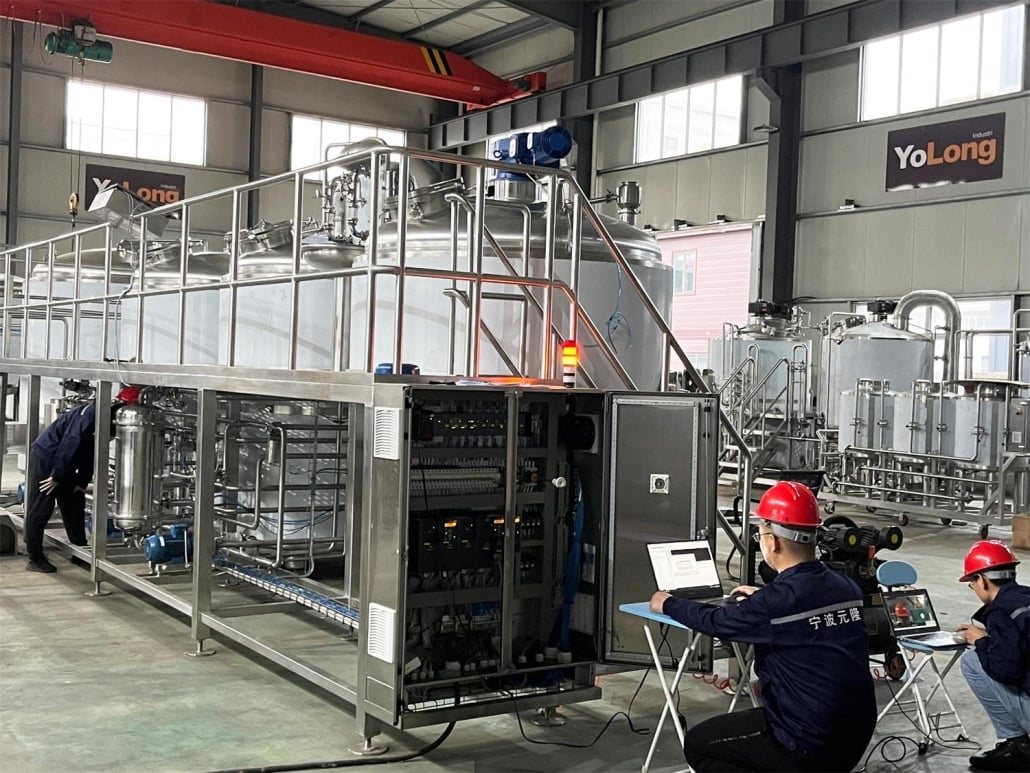
FAQ
| Question | Answer |
|---|---|
| What size fermenter should I use? | For home brewing, a 1-2 gallon glass jar is ideal. For commercial brewing, consider stainless steel fermenters between 10-500 gallons based on your production goals. |
| How long does kombucha take to ferment? | Kombucha typically ferments in 7-30 days, depending on temperature and taste preferences. |
| Do I need to use filtration for my kombucha? | Filtration is optional. It’s typically used in commercial brewing to extend shelf life but may remove beneficial probiotics. |
| Is stainless steel necessary? | Stainless steel is not necessary for home brewers but is recommended for commercial brewers due to its durability and non-reactive properties. |
| How do I maintain temperature control? | Heating mats or temperature-controlled jackets are essential for maintaining consistent temperatures, especially in cooler environments. |
Conclusion
Choosing the right kombucha brewing equipment depends largely on your brewing scale, space availability, and production goals. Home brewers can get started with affordable, simple tools, while commercial brewers need to invest in larger fermenters, bottling systems, and temperature control technologies.




